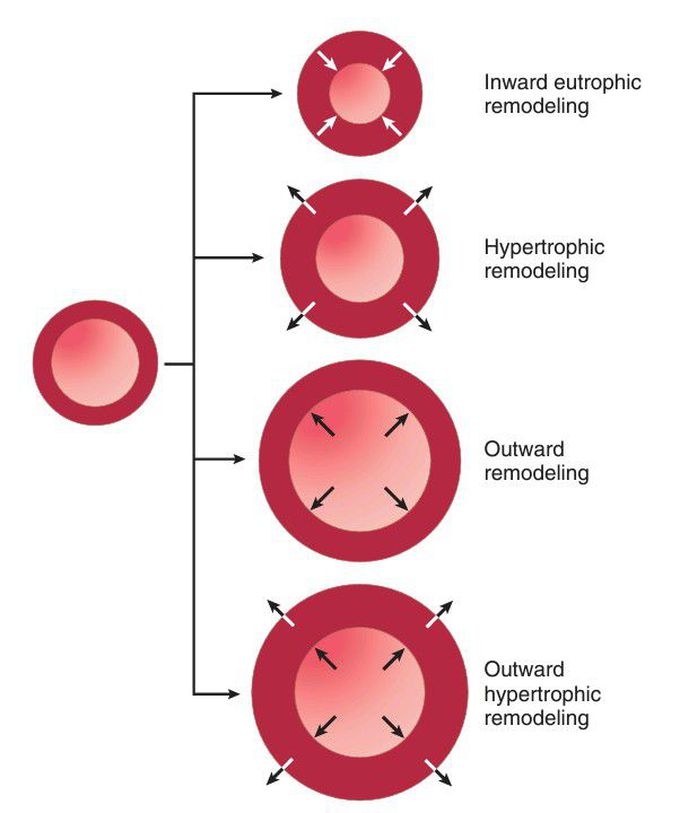


Vascular remodeling
Vascular remodeling in response to a chronic increase in blood pressure or blood flow. In small arteries and arterioles that constrict in response to increased blood pressure, inward eutrophic remodeling typically occurs because the lumen diameter is smaller and the vascular wall is thicker, but the total cross-sectional area of the vessel wall is hardly changed. In large blood vessels that do not constrict in response to increased blood pressure, there may be hypertrophic remodeling with increases in thickness and total crosssectional area of the vascular wall. If blood vessels are exposed to chronic increases in blood flow, there is typically outward remodeling with increases in lumen diameter, little change in wall thickness, and increased total cross-sectional area of the vascular wall. If the blood vessel is exposed to long-term increases in blood pressure and blood f low, there is usually outward hypertrophic remodeling with increases in lumen diameter, wall thickness, and total cross-sectional area of the vascular wall. Chronic reductions in blood pressure and blood f low have the opposite effects, as previously described.

